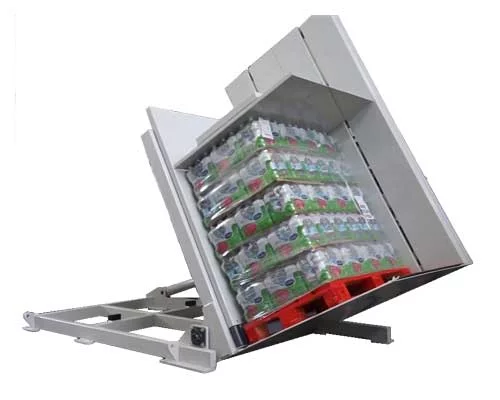Meeting GMP Compliance And Labor-Saving Automation Requirements in Malaysia with Automated Pallet Exchange
Are you running a manufacturing facility in a place like Malaysia, where the pressure is constantly on? You have to meet strict international standards like Good Manufacturing Practices (GMP) to keep your products safe and exportable. At the same time, finding reliable workers is getting harder and more expensive. It feels like you're being pulled in two different directions. You might worry that a single contaminated pallet could ruin a whole batch, or that rising labor costs will make you uncompetitive. These are not small problems; they are real threats to your business's health and growth. But what if there was a single, powerful solution that tackles both issues head-on? An automated pallet exchange system is that solution, designed to enforce compliance and slash your reliance on manual labor.
An automated pallet exchange system meets GMP compliance and labor-saving requirements in Malaysia by creating a sterile, controlled barrier between outside logistics and your clean production areas. It automatically transfers goods from external pallets (often wood) to sanitized in-house pallets without any manual handling. This single action eliminates a primary source of contamination and automates a physically difficult job, which directly reduces labor costs, prevents injuries, and speeds up your entire operation.
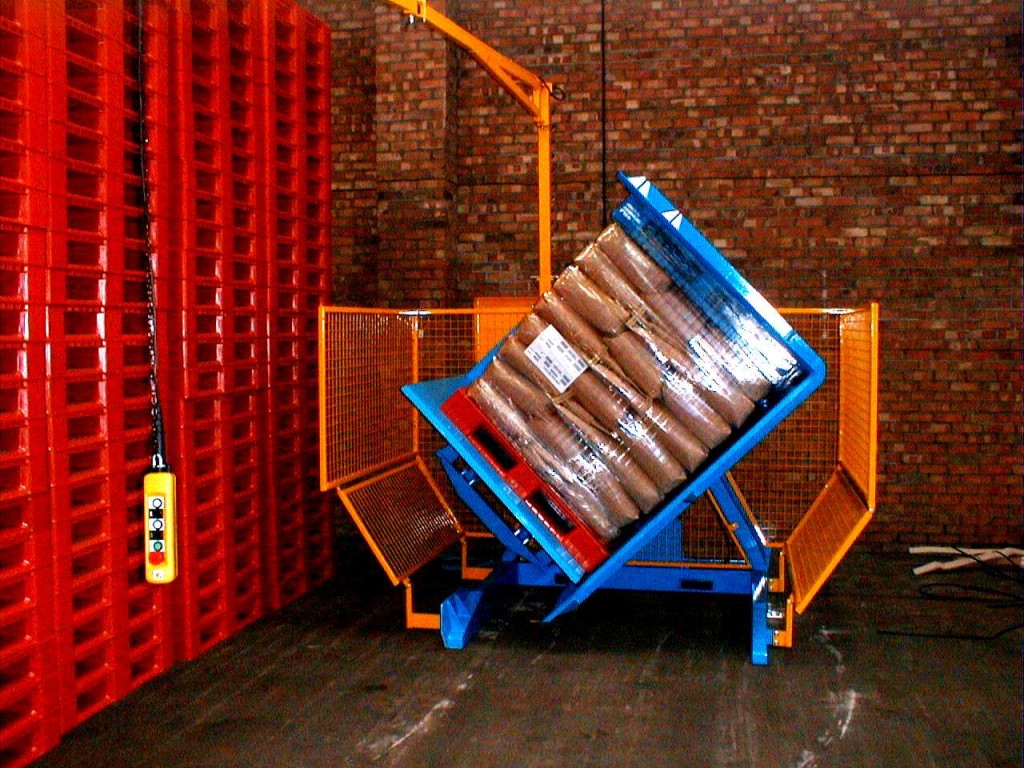
This sounds like a perfect fix, but I know from my years as an engineer that big claims need solid proof. I started my journey on the factory floor, just like many of your team members. I've seen what works and what doesn't. My company, SHJLPACK, was built on the principle of finding practical solutions to real-world problems. An automated pallet exchanger isn't just a piece of equipment; it's a strategic tool. Let’s break down exactly how these systems work and why they are such a critical investment for modern manufacturing. We will look at the details, the numbers, and the practical things you need to think about.
How Can an Automated Pallet Exchange System Tackle GMP Cross-Contamination Risks?
In any industry that follows GMP, whether it's pharmaceuticals or food and beverage, you know the biggest dangers often come from the outside. Your receiving dock is a major vulnerability. Wooden pallets from suppliers can arrive wet, carrying mold, insects, or chemical residues from their long journey. This is a direct threat to your controlled, clean environment. The fear is that one of these contaminated pallets will get past your defenses and cause a batch failure. A recall is not just expensive; it can destroy the trust your customers have in your brand. Relying on people to manually inspect and clean every pallet is a weak link. It's slow, and even the best employee can make a mistake. An automated pallet exchanger solves this by acting as a powerful gatekeeper, ensuring that nothing from the outside world ever compromises your production floor.
An automated pallet exchange system directly tackles GMP cross-contamination by completely separating external pallets from your internal, clean-zone pallets. The machine securely holds the product load, then either inverts it or pushes it smoothly onto a sanitized, company-owned pallet (often made of plastic or aluminum). This entire transfer happens within a designated, controlled area. It creates a clear, verifiable break in the chain of custody, preventing contaminants like wood splinters, bacteria, and moisture from ever entering your sensitive production zones.
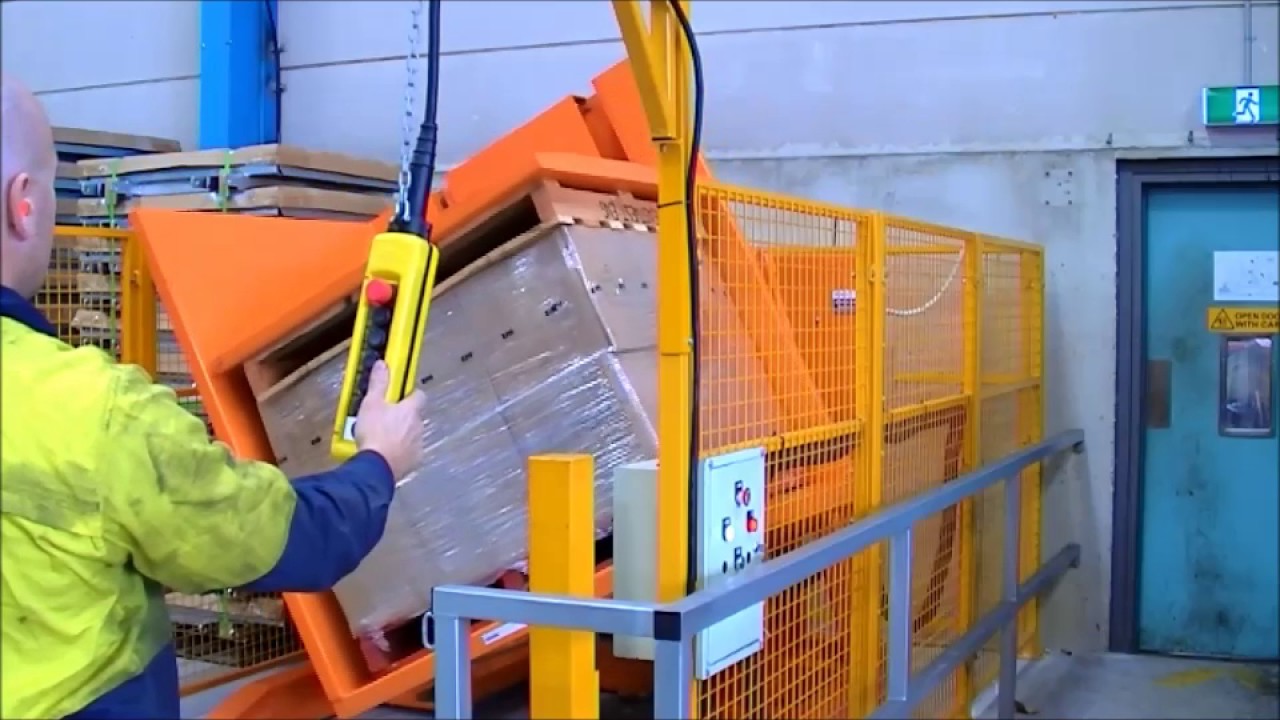
Dive Deeper: The Engineering Behind a Sterile Transfer
To truly understand the value, you need to look at the engineering principles at work. It's not just about swapping pallets; it's about creating a foolproof process that auditors and quality managers can trust. I've designed and installed these systems, and the beauty is in their simplicity and reliability.
The "Clean Break" Principle
The core concept is creating what we call a "clean break." This is a physical and procedural line that external materials cannot cross. Manually, this is very hard to enforce. A worker might step from the "dirty" zone to the "clean" zone, or a forklift might carry contaminants on its forks. An automated system eliminates this ambiguity. The machine is stationary. The external pallet goes in one side, and the internal, clean pallet goes in the other. The product is transferred in the middle. There is no cross-movement of pallets or personnel, creating a perfect clean break every single time. This process is repeatable, measurable, and can be logged automatically, which is exactly what you need for GMP validation.
Material Integrity: Wood vs. Plastic
The material of the pallet itself is a huge factor in GMP. Wood is a natural, porous material. It absorbs moisture, can splinter, and provides a home for pests and microorganisms. It's nearly impossible to truly sanitize a wooden pallet. In contrast, in-house pallets are typically made from non-porous materials.
| Feature | Standard Wooden Pallet | GMP-Compliant Plastic/Aluminum Pallet |
|---|---|---|
| Surface | Porous, can splinter | Smooth, non-porous |
| Sanitization | Difficult to clean and verify | Easy to wash, sanitize, and dry |
| Contaminant Risk | High (mold, pests, bacteria) | Very Low |
| Durability | Prone to damage and breakage | High, consistent dimensions |
| Traceability | Often untraceable | Can be tagged with RFID/barcodes |
By automating the switch from wood to plastic, you are not just changing a pallet; you are fundamentally upgrading your entire hygiene protocol at the most critical entry point of your facility.
Process Validation and Automation
In a GMP environment, you have to prove your processes are under control. An automated pallet exchanger makes this easy. The system operates on a defined, programmed cycle. Sensors confirm the presence of the pallet, the clamp pressure is set and monitored, and the cycle time is logged. This data can be fed directly into your Manufacturing Execution System (MES). During an audit, you don't have to show manual cleaning logs that depend on human diligence. Instead, you can show a digital record of every single pallet transfer, proving your process is consistent and under control 24/7. This level of data-driven validation is impossible to achieve with a manual process.
What Are the Real Labor-Saving Benefits of Automating Pallet Swaps?
Let's be honest. Manually moving goods off one pallet and stacking them onto another is brutal work. It's one of the most physically demanding, repetitive, and low-skill jobs in any warehouse or factory. This creates a cascade of problems. You face high employee turnover because nobody wants to do this job for long. You have a constant risk of back injuries, strained muscles, and other workplace accidents, which leads to higher insurance premiums and lost time. And it's a huge bottleneck. A team of two or three people manually restacking a pallet can slow down your entire receiving process, causing trucks to wait and production lines to starve for materials. Automation completely changes this picture. It takes the most physically taxing job off your team's shoulders and turns it into a fast, efficient, and safe process.
The real labor-saving benefits of automating pallet swaps go far beyond just cutting headcount. A single automated system can do the work of a 2-3 person team, operating continuously without breaks or injuries. This immediately reduces direct labor costs and eliminates the high costs associated with workplace injury claims. More importantly, it increases your overall throughput dramatically and allows you to reassign your valuable human workers to more complex, higher-value tasks like quality assurance, machine operation, or inventory management.
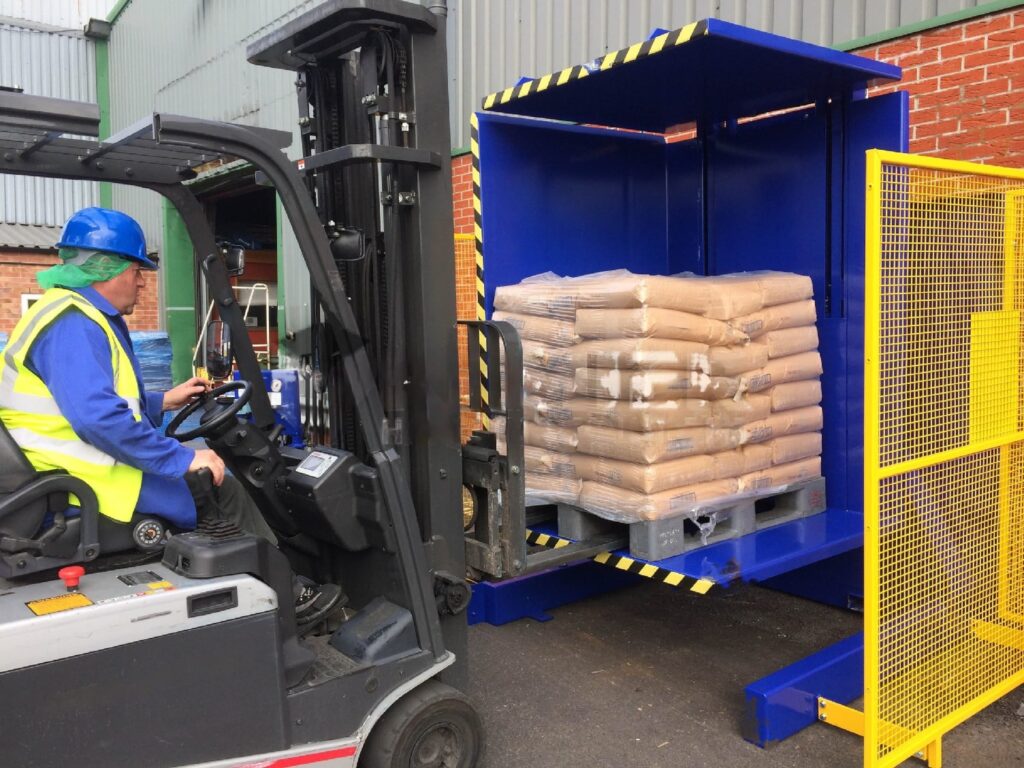
Dive Deeper: A Deeper Look at the ROI
When I help a client evaluate a piece of equipment, I don't just talk about features. I talk about the numbers. A CEO or factory owner needs to see a clear path to getting their money back and increasing profitability. The return on investment (ROI) for an automated pallet exchanger is one of the clearest and fastest in the packaging world.
Direct and Indirect Cost Savings
The savings are not just in the salaries you no longer have to pay for manual handling. The true financial impact is much broader. Think about it from a total cost perspective.
| Cost Category | Manual Pallet Transfer | Automated Pallet Exchange |
|---|---|---|
| Direct Labor | 2-3 Employees per shift | 0.25 Employee (supervisor) |
| Injury Risk & Costs | High (back strains, repetitive motion) | Virtually Zero |
| Product Damage | Moderate (from dropping, mishandling) | Very Low (controlled, gentle handling) |
| Throughput/Speed | 10-20 minutes per pallet | 1-2 minutes per pallet |
| Employee Turnover | High | Low (better job quality) |
When you add up the costs of recruitment, training, injury claims, and damaged products, the financial case for automation becomes undeniable. A machine doesn't get tired, ask for a raise, or file a workers' compensation claim.
Elevating Your Workforce
I often hear people worry that automation takes away jobs. From my experience, I see the opposite. It takes away the worst jobs. It removes the dangerous, monotonous tasks that no one wants to do. This allows you to elevate your workforce. The person who used to break their back lifting boxes can now be trained to operate the pallet exchanger, oversee a whole automated line, or perform detailed quality checks. You are not replacing a person; you are upgrading their role from manual labor to a skilled operator. This improves morale, increases employee loyalty, and builds a more capable team for your company's future.
A Simple Throughput Calculation
Let's make this very concrete. Suppose a manual team can transfer 4 pallets per hour. In an 8-hour shift, that's 32 pallets. An automated pallet exchanger can easily handle 30 pallets per hour. In that same 8-hour shift, it can process 240 pallets. That is a 750% increase in throughput at a critical bottleneck in your facility. What would that mean for your business? It means trucks are unloaded faster, materials get to the production line sooner, and finished goods are shipped out more quickly. This speed translates directly into higher capacity and increased revenue, all while lowering your operational risk and cost.
Why is an Automated Pallet Exchanger a Smart Investment for Malaysian Manufacturing?
The manufacturing landscape in Malaysia is dynamic and challenging. Local companies are not just competing with each other; they are competing on a global stage. This means dealing with rising labor costs at home while meeting the world-class quality and efficiency standards demanded by international customers. Furthermore, the Malaysian government is actively encouraging businesses to modernize and adopt technologies under the banner of Industry 4.0. If you continue to rely on old, manual processes, you risk getting left behind. Your competitors will become faster and more efficient, your labor costs will continue to climb, and you may struggle to meet the strict requirements of export markets. Investing in automation like a pallet exchanger is not just another capital expense. It is a decisive, strategic move to make your business stronger, more efficient, and ready for the future.
An automated pallet exchanger is a particularly smart investment for Malaysian manufacturing because it provides a direct solution to the country's most pressing industrial challenges. It counters rising labor costs with automation, meets the strict GMP and quality control standards required for valuable export markets, and aligns perfectly with the national strategy to advance towards Industry 4.0. It delivers a clear and rapid return on investment by cutting operating costs, guaranteeing compliance, and increasing your overall production capacity.
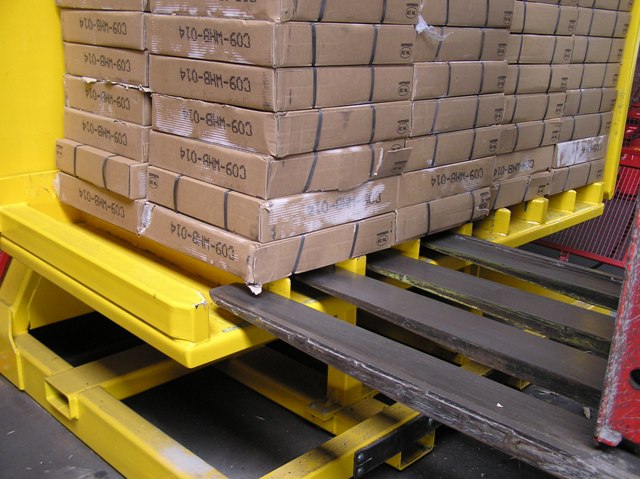
Dive Deeper: The Strategic Business Case for Malaysia
As an engineer who has helped businesses grow, I've learned that the best investments are the ones that solve multiple problems at once. This is especially true in a complex market like Malaysia. An automated pallet exchanger isn't just a machine; it's a solution that strengthens your entire business model.
Aligning with National Goals: Industry 4.0
Malaysia's push for "Industry4WRD" is a national policy to encourage manufacturers to adopt smart technologies. This includes automation, data analytics, and connected systems. By investing in an automated pallet exchanger, you are not just improving your own factory; you are aligning your business with the country's economic future. Often, there are government grants, tax incentives, or financing programs available for companies that invest in this kind of approved technology. This can significantly lower the initial cost and shorten the payback period, making the financial case even more compelling. It positions your company as a forward-thinking leader, which can help in attracting top talent and new business opportunities.
Building a Resilient and Future-Proof Operation
The past few years have taught us all about the importance of a resilient supply chain. One of the biggest vulnerabilities for many Malaysian companies is their reliance on manual labor, which can be unpredictable. An automated system runs reliably day in and day out. It doesn't get sick, it doesn't go on strike, and it isn't affected by labor shortages. By automating a critical process like pallet handling, you are reducing your company's dependence on these external factors. You are building a more stable, predictable, and resilient operation that can weather economic ups and downs more effectively.
Unlocking Higher-Value Export Markets
The biggest opportunity for many Malaysian manufacturers is in exporting to high-value markets like Europe, North America, and Japan. But these markets have the strictest standards. They demand full traceability, proven quality control, and often have zero tolerance for issues like contamination. An automated pallet exchange system is a clear signal to these international buyers that you are serious about quality. It provides the documented, verifiable GMP compliance that they require. It can be the key that unlocks access to these lucrative markets, allowing you to sell your products at a higher price point and grow your business globally. It's not just about saving costs; it's about creating new revenue.
What Key Factors Should You Consider Before Integrating an Automated Pallet Exchanger?
You've seen the benefits and you're ready to explore automation. This is a great step. But buying a major piece of industrial equipment can feel overwhelming. I know this because I've been on both sides—as an engineer in a factory and now as a supplier. Making the wrong choice can be costly. You could end up with a machine that is too slow for your needs, cannot handle your specific products, or is a maintenance nightmare. A machine that was supposed to solve your bottleneck could become a new one. The good news is that you can avoid these problems with careful planning. By focusing on a few critical factors and asking the right questions, you can ensure that you select a system and a partner that will truly deliver the results you expect.
Before integrating an automated pallet exchanger, you must carefully evaluate four key factors. First, analyze your load characteristics, including its weight, dimensions, stability, and type (e.g., boxes, bags, pails). Second, define your throughput needs to ensure the machine’s cycle time can keep pace with your production line. Third, assess your facility's layout, available space, and utility connections. Finally, and most importantly, scrutinize the supplier’s expertise in customization, installation, training, and long-term after-sales support.
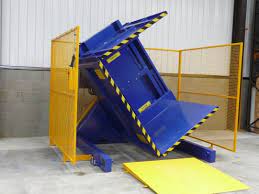
Dive Deeper: Your Engineering Checklist for Success
As an engineer, I believe in checklists. They prevent mistakes and ensure nothing is overlooked. A successful automation project is all about the details you address before you place the order. Here is a practical checklist to guide your decision-making process.
1. Analyze Your Load: It's Not One-Size-Fits-All
The product itself is the most important variable. A machine designed for sturdy, uniform boxes will fail if you try to use it for bags of fine powder or open-top pails.
- Weight & Dimensions: What are the minimum and maximum weights and footprints (length x width x height) of your pallet loads?
- Product Type: Are you handling boxes, bags, drums, pails, bottles, or something else?
- Stability: Is the load stable and stackable, or is it fragile and prone to shifting? A load of bricks is very different from a load of glass vials. This will determine if you need a simple inverter or a more advanced system with side-support walls and top-pressure plates.
2. Map Your Process and Throughput
The machine must fit seamlessly into your existing workflow.
- Speed: How many pallets per hour do you need to process now? What about in five years? Always plan for future growth.
- Integration: Will this be a standalone station where a forklift brings pallets? Or does it need to be integrated into an automated conveyor line? This has major implications for the machine's design and controls.
- Layout: Where will it go? You need to measure the available floor space, but also consider vertical clearance. You also need access for maintenance and to load/unload the pallets.
3. Choosing the Right Partner, Not Just the Right Machine
This might be the most important factor of all. In my journey from employee to factory owner, I learned that a cheap machine with poor support is far more expensive in the long run than a quality machine from a true partner.
- Expertise: Does the supplier understand your industry and your specific challenges, like GMP? Have they done this before?
- Support: What does their support look like? Do they offer installation and commissioning? Do they provide comprehensive training for your operators and maintenance staff?
- Service: How quickly can they provide spare parts? Do they have technicians available to help if you run into a problem? A machine is only valuable when it's running.
Here is a simple table to help you compare potential suppliers:
| Evaluation Criteria | Supplier A | Supplier B | Supplier C |
|---|---|---|---|
| Experience with Your Product? | |||
| Customization Capability? | |||
| Installation & Training Included? | |||
| Local Service/Parts Availability? | |||
| Warranty & Support Plan? |
This structured approach will help you look beyond the price tag and choose a solution that provides long-term value for your business.
My Insights: A Lesson from Malaysia for a Steel Leader in Mexico
You might be reading this and thinking, "Vincent, this is interesting, but I run a steel mill in Mexico. What does a GMP-compliant machine in a Malaysian food factory have to do with my business?"
It's a fair question. On the surface, the industries look completely different. But as an engineer who has designed solutions for everything from steel wire packing to pharmaceutical logistics, I have learned one fundamental truth: the core challenges of manufacturing are universal. They just wear different clothes.
The challenges you face, Javier, are about managing costs, ensuring quality, and increasing efficiency. Your goal to reduce operating costs by 8% is the same goal a food factory has, just on a different scale. Your need for production stability and 95% uptime is the same battle everyone fights against equipment failure and bottlenecks.
Let's translate.
- The Malaysian factory's need for GMP compliance is your need for strict quality control to meet API or automotive-grade steel standards. A single defect is as costly as a contaminated batch.
- Their risk of cross-contamination is your risk of a safety incident or a critical equipment failure from an aging production line.
- Their drive for labor-saving automation to counter rising wages is your drive to reduce operating costs against volatile energy prices and market fluctuations.
The automated pallet exchanger is just one tool, a specific solution for a specific problem. But the thinking behind it is what matters. The process of analyzing a problem (manual handling), identifying the risks (cost, injury, contamination), and implementing a data-driven, automated solution is exactly the same process you use when you introduce a smart scheduling platform or a new energy recovery system.
I started SHJLPACK not just to build machines, but to share this problem-solving approach. My own success came from looking at a problem on the factory floor and asking, "How can we do this better, safer, and cheaper?" It's that engineering mindset that allowed me to build my own business.
Javier, you are looking for a strategic partner, not just a supplier. A true partner understands these universal principles. They don't just sell you a standard machine from a catalog. They listen to your unique problem—whether it's reducing energy costs in a Mexican steel mill or ensuring GMP in a Malaysian factory—and use their broad experience to help you find the right solution. This is the philosophy I am committed to, and it’s the most valuable lesson I can share.
Conclusion
Ultimately, strategic automation like a pallet exchanger solves core business problems. It is a powerful tool to boost operational safety, guarantee product quality, and deliver significant, measurable cost reductions.

